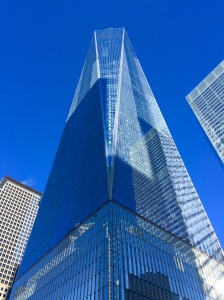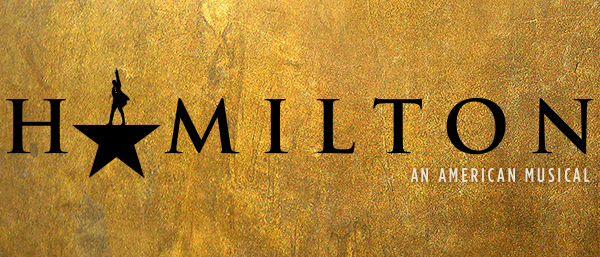The moral of the day is this: How the story is told is just as important as the story itself.
Forewarning: this post is going be much more reflective because I have a lot of ideas (read: feelings) right now because we did and saw a lot today. So bear with me as I took notes throughout the day as these ideas (read: feelings) came to me. There are people much smarter and much more eloquent than I am who have discussed these topics at length so please don’t expect that I am reinventing the wheel here. This is just a place for me to organize and share my thoughts and opinions given my own knowledge and experience.
But to make this easier on you (dear reader) here’s a chronology of today’s activities so you can skip ahead to what might interest you more:
1.Federal Hall National Memorial
2. African Burial Ground National Memorial
3.Federal Reserve Bank of New York
4. “Hamilton”
1. Federal Hall National Memorial
Our first stop of the day was Federal Hall National Memorial.Way back when the capital of the United States was in New York City, Federal Hall served as the capitol building. Then when the capital was moved to Washington DC (by way of Philadelphia) in 1800, Federal Hall was converted to a state/local government building. Long story short that original building was demolished and the Federal Hall National Memorial was built in its place and used as the US Customs Building then a series of other governmental buildings before becoming the tourist site it is now.
If we generally accept that information given out or displayed at sites operated by the National Park Service is “official” information, then we can also accept that the NPS has a responsibility to do those site justice in how it tells that information. I am a fan of the NPS and have visited a number of historical site run by the organization in different places. But Federal Hall left much to be desired to be honest. I didn’t have any expectations before the our visit but I was left disappointed the lack of materials or resources at this site. The information was general and read more like a elementary school textbook-very concise and to the point but doesn’t leave me yearning for more information because I’m not convinced of its importance. Federal Hall had more interesting information about other National Park Service sites..like the whole place was an advertisement for the National Park Service.
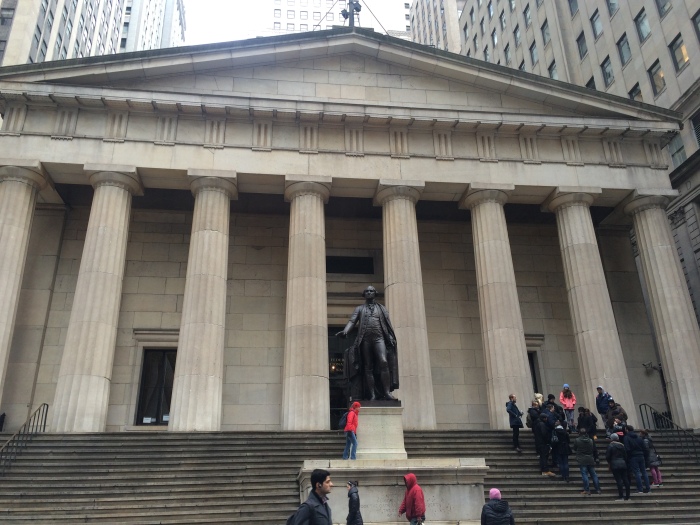
2. African Burial Ground National Memorial
Security at the African Burial Ground National Memorial is serious as it is housed in a federal building. That juxtaposition confused me but the introductory film shown in the visitor’s center cleared that up real quick. Construction crews were excavating the land at 290 Broadway in 1991 to build a new federal building when human remains were found. It was quickly discovered that the site was the former “Negro Burial Ground” a cemetery where enslaved and free blacks were allowed to bury their dead. Community members protested how the remains were being treated because (as anyone should know) federal agencies don’t have the greatest track record for care and sensitivity when it comes to African American people, history or culture. The introductory film stressed that slavery was about the deprivation of humanity and so slaves, in an effort to reaffirm their humanity, participated in very ceremonious burial practices. No other species buries there dead, that is a particularly human thing to do. The bones were sent to Howard University for research then sent back to the site in a celebratory precession and then reburied in elaborately carved coffins.
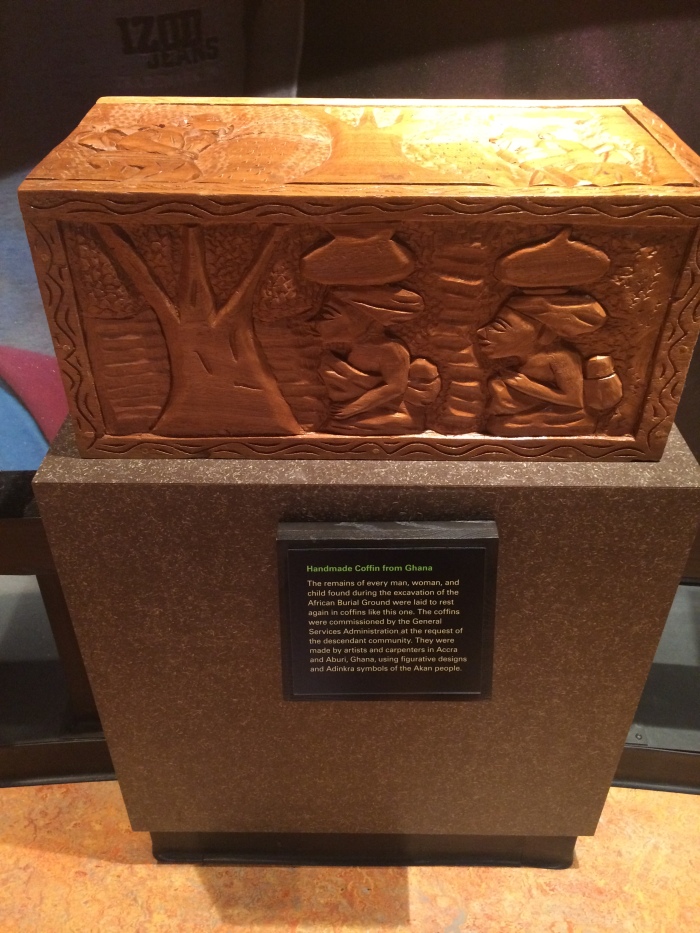
Only 419 remains were found and subsequently reinterred but officials (historians, archeologists, anthropologists) estimate that upwards of 15,000 people were buried in the area.
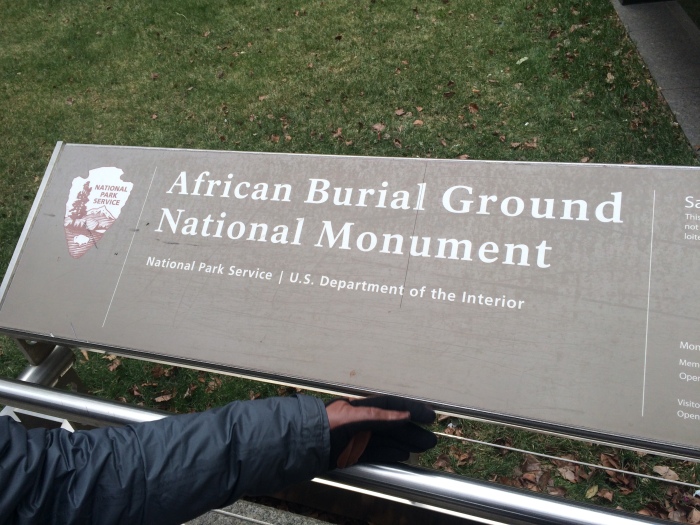
The introductory film ended with former governor of NY David Paterson saying that this story was not Black History but American History that is finally being told. I wholeheartedly agree, but with one concession. The history of slavery is American History and we cannot turn away from that. But I personally think there is something very powerful in staking a claim for Black History as a black American. To recognize that my ancestors suffered so much and rose out from that particular brutality is empowering. I was lucky enough to have teachers that never shied away from telling the truth of this institution. I had teachers who challenged me to find my own knowledge and encouraged me to not accept the popular, safe notion that slavery was simply unpaid work and once Lincoln signed that piece of paper all the ills of the past were corrected. But I think the biggest impact these teachers had was to teach me that black history does not begin with slavery. Black history is not only pain and suffering but a narrative of triumph and courage…call me a romantic but I much prefer the latter.
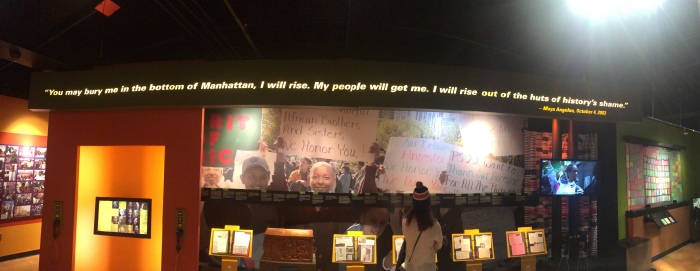
In relation to “Hamilton” the show addresses both Hamilton’s abolitionism and Thomas Jefferson’s hypocrisy in being all about independence so long as he could keep his slaves. Dr. Stephen Knott (the professor who gave a talk on Monday) wouldn’t categorize Hamilton as a “fire-breathing abolitionist” but does acknowledge that Hamilton certainly wanted to see the institution put on the path to extinction. Knott and Chernow (the author of the book that inspired the show) attribute Hamilton’s childhood in the Caribbean and his proximity to the especially cruel Caribbean iteration of slavery as what pushed him to be anti-slavery. But nothing in particular in the show stands out regarding how it addresses slavery. It is a background element (mostly crucial to John Laurens’ who wanted to free and recruit black slaves to fight against the British) but there isn’t much else. That’s not a condemnation but an observation. When Laurens asks after the British surrender at the Battle of Yorktown “Black and white soldiers wonder alike; does this mean freedom?” George Washington’s response is a very resolute “Not yet”. A generally informed audience member should then remember that Washington was also a slave-owner and while he is the “Father of our Country” there is no such thing as a benevolent slave master. For Washington, slavery was an issue for another time and he doesn’t mention it again.
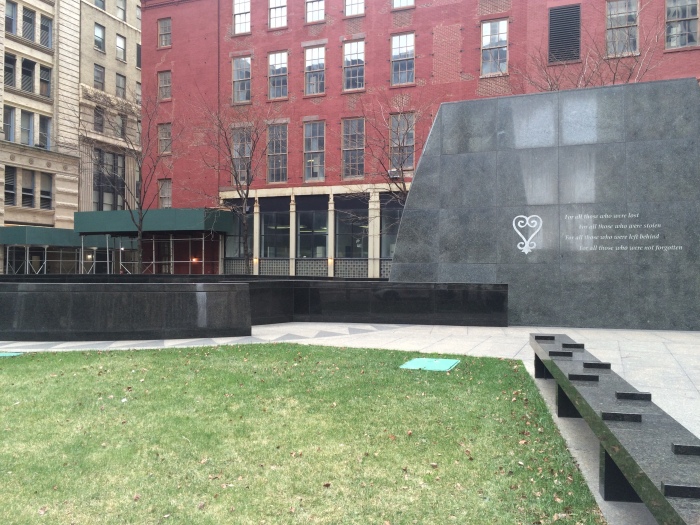
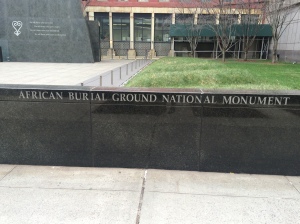
I can appreciate how the show begins to dissect Jefferson’s demigod standing in American culture. One of my favorite lyrics comes from “Cabinet Battle #1” Jefferson is opposed to Hamilton’s centralized financial plan because it meant the federal government would assume states’ debt. New York was in debt while Virginia was debt-free after the war. So Hamilton responds “A civics lesson from a slaver. Hey neighbor/ your debts are paid cause you don’t pay for labor/ “We plant seeds in the South. We create”/Yeah keep ranting/we know who’s really doing the planting”. Its a clever jab and the audience is expected to appreciate the weight behind it…but I’m not sure that they do.
3. Federal Reserve Bank of New York
The Federal Reserve Bank of New York is a part of the Federal Reserve Banking System and that’s the organization that basically controls all of the banks in all of the land. A centralized banking system used to regulate national currency, credit, and debt to create a sense of unity among the states and strengthen the power of the federal government …who’s great idea was that?Alexander Hamilton.Yay! Although the existing system was put in to place closer in time to my birth year than his (1913), Alexander Hamilton proposed a national banking system waaaay back when and it is his influence we have to thank for our present-day banking system. The tour we took (A woman named Maureen was our wonderful guide) focused mostly on the responsibilities of the FRBNY and its place in the bigger picture of national banking. The FRBNY is the sole reserve bank responsible for guarding foreign gold reserves. 360 Billon dollars worth. The gold in the vault in the basement (which we got to see) belongs to foreign countries and sovereignties. And while Maureen couldn’t tell us which countries had accounts in the gold vault it was an impressive collection nonetheless. Long story short: It’s a cool tour to take if you find yourself in NYC with an hour of time and nothing better to do. When else would you get a chance be so close to $360 Billion?

However the more time we spent in the financial district, particularly on Wall Street, the more unnerved I became. It’s all very fascinating (and a great callback to my financial literacy education in elementary school) but I could not keep my mind off the slaves that built this wealth and are buried beneath the foundations of these buildings.
Nona Faustine is an artist from Brooklyn and it was her project entitled “White Shoes” that kept running though my mind today. Her “White Shoes” series serves to demonstrate that elements of the past that are brutal/ugly/violent cannot be ignored or separated from the narrative struggle for Freedom, Liberty, and the Pursuit of Happiness. A lot can be gleaned from what the storytellers choose to ignore and/or erase.
Here is the link to an article about Faustine and her work. I strongly encourage you to check it out.
4. “Hamilton”
“Hamilton” There aren’t words enough to describe the brilliance of this show from the music to the staging to the light cues and even the merchandising. But this section isn’t about the show itself. “Hamilton” has been so discussed and dissected that nothing I can write can explain it better. Remember I’m not trying to reinvent the wheel.
It’s brilliant. point.blank.period. I’ll forever love this show but I’m trying to move beyond the blind adoration stage into something more critical.

My interest in this musical is not just the story it tells about Alexander Hamilton & Co. but my interest stems from my fascination with the relationship between History and the public (non-academic people in non-academic settings). The most obvious way this show departs from a typical Founding Father narrative is that the cast is almost entirely composed of actors of color. Simply put is inspiring to see black, brown, and beige faces on stage in such a groundbreaking Broadway show. “Hamilton” is the story of an immigrant making his mark in his adopted country and moving beyond the stigma and stereotypes to enact change and leave a legacy behind.
So given this interpretation and casting two major things are happening. The first is that POC are putting themselves into a narrative that has typically erased or neglected them. We are told almost from birth that everyone has (and has always had) the right to Life, Liberty, and Pursuit of Happiness (another point the show makes in its characterization of Thomas Jefferson) but one look in a textbook or at popular media and the faces that represent those values are mainly white, male, formally educated, able-bodied, and wealthy. If the American Dream is attainable for any American then “Hamilton” demands we prove it as the show is an attempt to bring those pushed to margins closer to the center of American history.

But the fact remains that George Washington was not biracial, nor was Alexander Hamilton latino. So in a way, POC are being told to relate to the lives and legacies of historical figures who were not always invested in the liberation or autonomy of non-white communities. Yes Hamilton was an immigrant from the Caribbean but he was still a white man who received a scholarship from King’s College because of the sponsorship of his employers and other well-connected men in the New York colony. That of course does not take away from Hamilton’s own innate talents and hard-work, but you have to admit he was also lucky in a lot of ways. I’m not saying the solution is to produce more slave narratives on screen/stage (although I am excited to see Nate Parker’s “The Birth of a Nation”) but to produce films and tv shows that can address the complicated historical relationship between America(ns) and race. It not an add-and-stir recipe but a set of deliberate steps to avoid something this …
Like I said before, I love this show I think its an amazing feat, its beautifully performed across the board, and there won’t be something like this for a very long time. It goes to show want can be produced when POC are given free space, access, and reign to do the storytelling. But that does not free this narrative from criticism.
